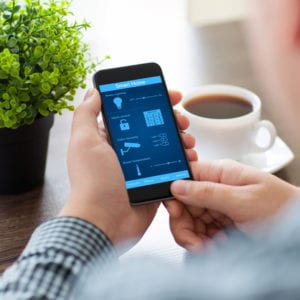The Future of Heating Your Home
One inevitability in life is the continued advancement of technology.
So many of the things we take for granted every day would have seemed like science fiction at the turn of the century. These changes extend into almost every aspect of our lives, including our home comfort systems.
Here are some of the ways in which the future of heating your home could change in the next ten years.
Smart Thermostats
Yes, we already have these, but they will continue to become even more precise and useful. The programming possibilities of the current smart thermostats are already an immense help at reducing the cost of heating and cooling your home. The fact that you can do this while not even being on your property is a further convenience.
However, a new generation of models also allow you to remotely control other types of HVAC equipment in your home. Imagine also being able to operate your humidifier and dehumidifier using a smartphone? At the moment, you are not likely to find such extras on a mid-priced thermostat, but it is only a matter of time before that technology becomes standard. All-in-one control systems like Apple’s HomeKit are so tempting to high-end consumers, the push to expand the abilities of such products could soon result in further HVAC applications no one has considered possible yet.
Solar Power
Some of us already have solar panels installed on our roof, but experts agree that we are still in the early days of just what this energy source can do. Already companies are coming up with panels that are far less conspicuous and require much less room.
The quest for efficient “green buildings” has led to several exciting innovations. With the increasing ability to embed solar cells in unusual places (including windows!), that means an even greater way to generate power. Could you run a whole HVAC system using just the solar power your home collects? It could well be possible in the years to come.
Self-Cleaning Ducts
It is important to periodically have your ducts cleaned because blockages affect both air flow and quality. It’s not too difficult or expensive to have professionals perform this service, but wouldn’t it be great if the ducts just did it themselves? Self-cleaning ducts would be especially helpful in places like hospitals and seniors’ homes, which are not only concerned with environmental comfort, but also with preserving hygienic conditions and air quality.
Companies from Australia and Italy are collaborating on ducts that would use an antimicrobial duct solution with self-cleaning nanostructured coating. The inspiration for this comes from the self-cleaning lotus leaf, which always remains clean, no matter how dirty the environment. It is quite feasible to believe that should this technology prove successful, home applications could be right around the corner.
Other Possibilities
The thought behind the Internet of Things is that if something can be connected to the web, it will be. Many people will find this daunting, but once the savings and convenience become apparent, and the tech learning curve reduces, these worries will be forgotten. As with everything, early adopters pay more, but in nearly all cases, once a technology is established it soon leads to price reductions.
Wouldn’t it be great to not only control your furnace from afar, but also have it alert you when the filter needs changing? Or advise when a breakdown has occurred, thus allowing you to immediately book a service call? It’s exciting to think about what the future could hold for the average homeowner in the years to come.
Image: besjunior



